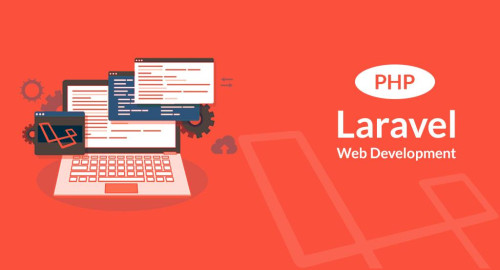In this article, we will see the laravel 9 MongoDB crud operation tutorial. In laravel, we will have many crud operations created with MySQL database but now we will use MongoDB database to create crud operations in laravel 8 and laravel 9. Also, we will use jenssegers/laravel-mongodb composer package to create CRUD operation.
MongoDB is a document database used to build highly available and scalable internet applications. With its flexible schema approach, it's popular with development teams using agile methodologies.
MongoDB is well-suited for real-time analytics, content management, the Internet of Things, mobile, and other types of applications. MongoDB is faster and more scalable compared to SQL Server.
So, let's see crud operation with MongoDB in laravel 9, crud operation in laravel 9, and MongoDB crud operations in laravel 8/9.
In this step, we will install laravel 9 using the following command.
composer create-project --prefer-dist laravel/laravel mongodb_crud_operation_tutorialIn this step, we will create a MongoDB database. Make sure you have installed MongoDB in your system and connect with MongoDB before starting the CRUD operation.
mongo
> use laravel_9_crud
> db.posts.insert( { "name": "crud_tutorial", "detail": "this is details" } )In this step, we will set up the database configuration in the .env file as below.
MONGO_DB_HOST=127.0.0.1
MONGO_DB_PORT=27017
MONGO_DB_DATABASE=laravel_9_crud
MONGO_DB_USERNAME=root
MONGO_DB_PASSWORD=rootNow, we will add details to the database.php file.
<?php
return [
....
'connections' => [
......
'mongodb' => [
'driver' => 'mongodb',
'host' => env('MONGO_DB_HOST', 'localhost'),
'port' => env('MONGO_DB_PORT', 27017),
'database' => env('MONGO_DB_DATABASE'),
'username' => env('MONGO_DB_USERNAME'),
'password' => env('MONGO_DB_PASSWORD'),
'options' => []
],
]
]In this step, we will install the laravel-mongodb package using the following command.
composer require jenssegers/mongodbNow, we will create migration for the "posts" table using the laravel php artisan command.
php artisan make:migration create_posts_table --create=postsAfter running this command you will find php file in the "database/migrations/" location.
<?php
use Illuminate\Support\Facades\Schema;
use Illuminate\Database\Schema\Blueprint;
use Illuminate\Database\Migrations\Migration;
class CreatePostsTable extends Migration {
/**
* Run the migrations.
*
* @return void */
public function up()
{
Schema::create('posts', function (Blueprint $table) {
$table->bigIncrements('id');
$table->string('name')->nullable();
$table->longText('detail')->nullable();
$table->timestamps();
});
}
/**
* Reverse the migrations.
*
* @return void
*/
public function down()
{
Schema::dropIfExists('posts');
}
}Now, we will run migration by following the command.
php artisan migrateNow, we will add the Resource route in web.php
routes/web.php
Route::resource('posts','App\Http\Controllers\PostController');In this step, we will create the PostController using the following command.
php artisan make:controller PostController --resource --model=PostNow make changes to the Post.php Model.
app/Post.php
<?php
namespace App\Models;
use Illuminate\Database\Eloquent\Factories\HasFactory;
use Illuminate\Database\Eloquent\Model;
use Jenssegers\Mongodb\Eloquent\Model as Eloquent;
class Post extends Model
{
use HasFactory;
protected $connection = 'mongodb';
protected $collection = 'posts';
protected $fillable = [
'id', 'name', 'detail'
];
}After changes in the model, we will change the PostController.php file.
app/Http/Controllers/PostController.php
<?php
namespace App\Http\Controllers;
use App\Models\Post;
use Illuminate\Http\Request;
class PostController extends Controller
{
/**
* Display a listing of the resource.
*
* @return \Illuminate\Http\Response
*/
public function index()
{
$posts = Post::latest()->paginate(5);
return view('post.index',compact('posts'))->with('i', (request()->input('page', 1) - 1) * 5);
}
/**
* Show the form for creating a new resource.
*
* @return \Illuminate\Http\Response
*/
public function create()
{
return view('post.create');
}
/**
* Store a newly created resource in storage.
*
* @param \Illuminate\Http\Request $request
* @return \Illuminate\Http\Response
*/
public function store(Request $request)
{
$request->validate([
'name' => 'required',
'detail' => 'required',
]);
Post::create($request->all());
return redirect()->route('posts.index')->with('success','Post created successfully.');
}
/**
* Display the specified resource.
*
* @param \App\Models\Post $post
* @return \Illuminate\Http\Response
*/
public function show(Post $post)
{
return view('post.show',compact('post'));
}
/**
* Show the form for editing the specified resource.
*
* @param \App\Models\Post $post
* @return \Illuminate\Http\Response
*/
public function edit(Post $post)
{
return view('post.edit',compact('post'));
}
/**
* Update the specified resource in storage.
*
* @param \Illuminate\Http\Request $request
* @param \App\Models\Post $post
* @return \Illuminate\Http\Response
*/
public function update(Request $request, Post $post)
{
$request->validate([
'name' => 'required',
'detail' => 'required',
]);
$post->update($request->all());
return redirect()->route('posts.index')->with('success','Post updated successfully');
}
/**
* Remove the specified resource from storage.
*
* @param \App\Models\Post $post
* @return \Illuminate\Http\Response
*/
public function destroy(Post $post)
{
$post->delete();
return redirect()->route('posts.index')->with('success','Post deleted successfully');
}
}In this step, we have to create blade files. So, mainly we have to create a layout file and then create new folder "posts" and then create blade files of the CRUD application. So, you have to create the following below blade file.
1) layout.blade.php
2) index.blade.php
3) create.blade.php
4) edit.blade.php
5) show.blade.phpSo, let's just create the following file and put the below code.
resources/views/posts/layout.blade.php
<!DOCTYPE html>
<html>
<head>
<title>Laravel 9 MongoDB CRUD Operation Tutorial - Websolutionstuff</title>
<link href="https://cdnjs.cloudflare.com/ajax/libs/twitter-bootstrap/4.0.0-alpha/css/bootstrap.css" rel="stylesheet">
</head>
<body>
<div class="container" style="margin-top: 15px;">
@yield('content')
</div>
</body>
</html>resources/views/posts/index.blade.php
@extends('post.layout')
@section('content')
<div class="row">
<div class="col-lg-12 margin-tb">
<div class="pull-left">
<h2>Laravel 9 MongoDB CRUD Operation Tutorial - Websolutionstuff</h2>
</div>
<div class="pull-right">
<a class="btn btn-success" href="{{ route('posts.create') }}"> Create New Post</a>
</div>
</div>
</div>
@if ($message = Session::get('success'))
<div class="alert alert-success">
<p>{{ $message }}</p>
</div>
@endif
<table class="table table-bordered">
<tr>
<th>No</th>
<th>Name</th>
<th>Details</th>
<th width="280px">Action</th>
</tr>
@foreach ($posts as $post)
<tr>
<td>{{ ++$i }}</td>
<td>{{ $post->name }}</td>
<td>{{ $post->detail }}</td>
<td>
<form action="{{ route('posts.destroy',$post->id) }}" method="POST">
<a class="btn btn-info" href="{{ route('posts.show',$post->id) }}">Show</a>
<a class="btn btn-primary" href="{{ route('posts.edit',$post->id) }}">Edit</a>
@csrf
@method('DELETE')
<button type="submit" class="btn btn-danger">Delete</button>
</form>
</td>
</tr>
@endforeach
</table>
{!! $posts->links() !!}
@endsectionresources/views/posts/create.blade.php
@extends('post.layout')
@section('content')
<div class="row">
<div class="col-lg-12 margin-tb">
<div class="pull-left">
<h2>Add New Post</h2>
</div>
<div class="pull-right">
<a class="btn btn-primary" href="{{ route('posts.index') }}"> Back</a>
</div>
</div>
</div>
@if ($errors->any())
<div class="alert alert-danger">
<strong>Error!</strong> <br>
<ul>
@foreach ($errors->all() as $error)
<li>{{ $error }}</li>
@endforeach
</ul>
</div>
@endif
<form action="{{ route('posts.store') }}" method="POST">
@csrf
<div class="row">
<div class="col-xs-12 col-sm-12 col-md-12">
<div class="form-group">
<strong>Name:</strong>
<input type="text" name="name" class="form-control" placeholder="Name">
</div>
</div>
<div class="col-xs-12 col-sm-12 col-md-12">
<div class="form-group">
<strong>Detail:</strong>
<textarea class="form-control" style="height:150px" name="detail" placeholder="Detail"></textarea>
</div>
</div>
<div class="col-xs-12 col-sm-12 col-md-12 text-center">
<button type="submit" class="btn btn-primary">Submit</button>
</div>
</div>
</form>
@endsectionresources/views/posts/edit.blade.php
@extends('post.layout')
@section('content')
<div class="row">
<div class="col-lg-12 margin-tb">
<div class="pull-left">
<h2>Edit Post</h2>
</div>
<div class="pull-right">
<a class="btn btn-primary" href="{{ route('posts.index') }}"> Back</a>
</div>
</div>
</div>
@if ($errors->any())
<div class="alert alert-danger">
<strong>Error!</strong> <br>
<ul>
@foreach ($errors->all() as $error)
<li>{{ $error }}</li>
@endforeach
</ul>
</div>
@endif
<form action="{{ route('posts.update',$post->id) }}" method="POST">
@csrf
@method('PUT')
<div class="row">
<div class="col-xs-12 col-sm-12 col-md-12">
<div class="form-group">
<strong>Name:</strong>
<input type="text" name="name" value="{{ $post->name }}" class="form-control" placeholder="Name">
</div>
</div>
<div class="col-xs-12 col-sm-12 col-md-12">
<div class="form-group">
<strong>Detail:</strong>
<textarea class="form-control" style="height:150px" name="detail" placeholder="Detail">{{ $post->detail }}</textarea>
</div>
</div>
<div class="col-xs-12 col-sm-12 col-md-12 text-center">
<button type="submit" class="btn btn-primary">Submit</button>
</div>
</div>
</form>
@endsectionresources/views/posts/show.blade.php
@extends('post.layout')
@section('content')
<div class="row">
<div class="col-lg-12 margin-tb">
<div class="pull-left">
<h2> Show Post</h2>
</div>
<div class="pull-right">
<a class="btn btn-primary" href="{{ route('posts.index') }}"> Back</a>
</div>
</div>
</div>
<div class="row">
<div class="col-xs-12 col-sm-12 col-md-12">
<div class="form-group">
<strong>Name:</strong>
{{ $post->name }}
</div>
</div>
<div class="col-xs-12 col-sm-12 col-md-12">
<div class="form-group">
<strong>Details:</strong>
{{ $post->detail }}
</div>
</div>
</div>
@endsectionNow, Copy the below command and run it in the terminal.
php artisan serveYou might also like:
- Read Also: CRUD Operation In PHP
- Read Also: Laravel 9 User Role and Permission
- Read Also: Node.js Express CRUD Example with MySQL
- Read Also: How to Send E-mail Using Queue in Laravel 7/8






